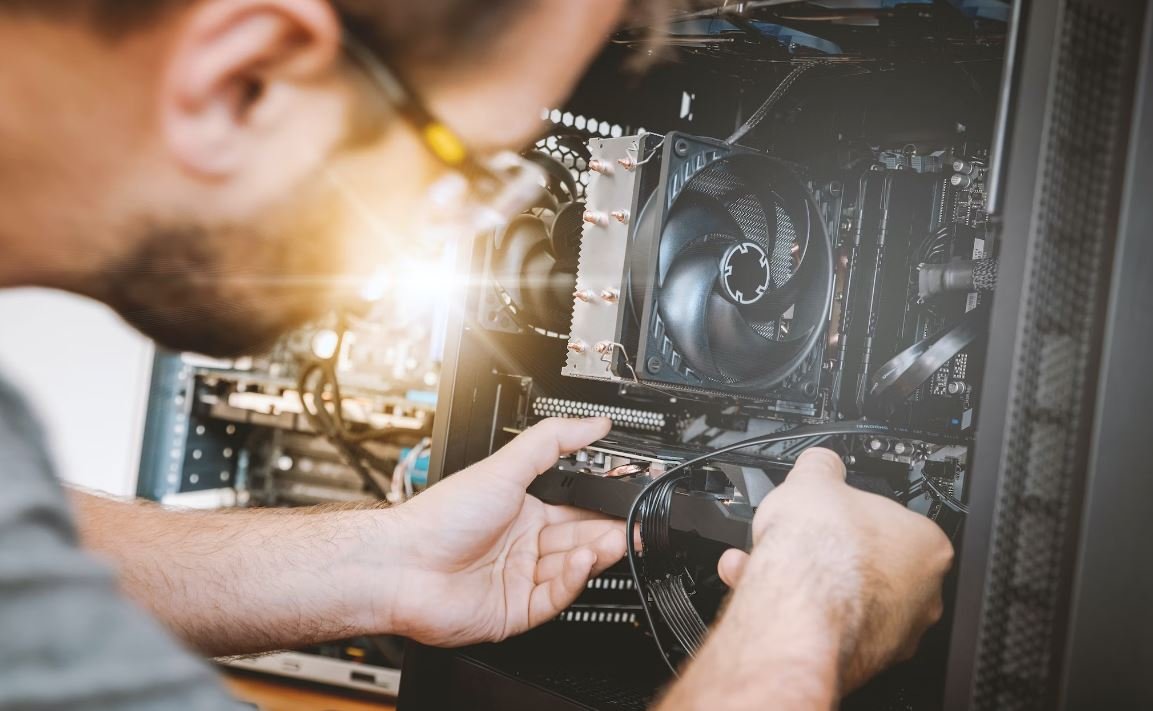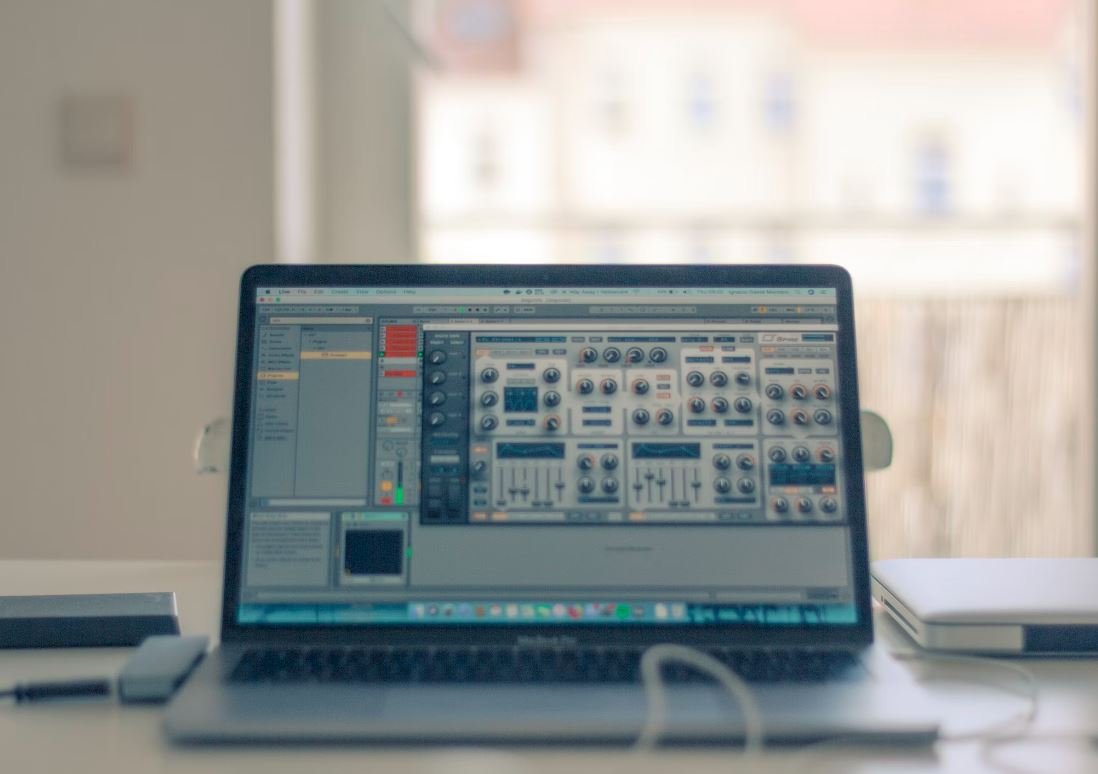AI Deepfake News
Artificial Intelligence (AI) has become increasingly sophisticated over the years, and with this advancement comes the rise of deepfake technology. Deepfakes refer to fabricated or manipulated videos and audios created using AI algorithms, often with the intent to deceive or mislead viewers. These AI-generated fakes have the potential to spread misinformation and pose significant challenges for media organizations, individuals, and society as a whole.
Key Takeaways:
- AI deepfakes utilize advanced algorithms to create fabricated videos and audios.
- Deepfakes can spread misinformation, leading to potential public distrust.
- Media organizations and individuals should be cautious when verifying news sources.
- Technological advancements are necessary to detect and combat deepfake content.
The Rise of AI Deepfakes
**Deepfake** technology has evolved significantly in recent years, thanks to advancements in machine learning and deep neural networks. This has made it easier for individuals to create highly realistic fake videos by swapping faces, altering speeches, or even generating entirely fabricated content. *AI deepfakes have become increasingly convincing, making it difficult to discern what is real and what is not.* These fabricated videos can involve altering the facial expressions, voice, or words of individuals in ways that make them difficult to detect without specialized tools.
Implications for Society and Media
The prevalence of AI deepfakes poses serious challenges to society and media organizations. Misinformation can spread rapidly, and fabricated videos can sway public opinion or damage the reputation of individuals and organizations. *The trust in traditional media is at stake as these fakes become more realistic and harder to identify.* With the potential to manipulate public discourse and sow division, deepfakes have far-reaching implications for democracy and social stability.
Detecting and Combating Deepfakes
Addressing the threat of AI deepfakes requires a multi-faceted approach. *Technology must play a crucial role in detecting and combating deepfake content.* While AI algorithms are advancing, so are the methods to detect deepfakes. Machine learning techniques can help identify inconsistencies or anomalies in videos, such as unnatural facial movements or audio sync issues. Collaboration between AI experts, media organizations, and fact-checking platforms is essential to develop effective countermeasures.
| Year | Number of Deepfakes Detected |
|---|---|
| 2017 | 7,964 |
| 2018 | 14,678 |
| 2019 | 53,098 |
The Importance of Media Literacy
In addition to technological advancements, media literacy plays a crucial role in combating the spread of deepfakes. Individuals need to develop critical thinking skills to question the authenticity of the content they consume. *Being aware of the existence of deepfakes and understanding their potential impact can help individuals navigate the digital landscape more effectively.* Media literacy programs and educational initiatives should aim to equip individuals with the knowledge and skills required to identify and analyze deepfake content.
| Country | Percentage of Adults Who Believe They Can Spot Deepfakes |
|---|---|
| United States | 34% |
| United Kingdom | 27% |
| France | 19% |
Future Challenges and Solutions
The battle against AI deepfakes is an ongoing one, as technology continues to evolve. As deepfake algorithms become more sophisticated, it becomes increasingly difficult to identify and debunk fake content. *Combating deepfakes will require continuous research and innovation in AI, as well as the collective efforts of technology companies, policymakers, and society as a whole. Improved algorithms for detection, better media literacy, and legal frameworks to address deepfake threats are all essential components in the fight against misinformation.*
- Investing in AI research and development to enhance deepfake detection capabilities.
- Collaborating with social media platforms to combat the spread of deepfake content.
- Implementing stricter regulations and legal consequences for the creation and distribution of deepfakes.
- Continuing to promote media literacy and critical thinking education to empower individuals.
In Conclusion
AI deepfake technology raises significant concerns regarding the spread of misinformation and the erosion of trust in media. The rise of deepfakes necessitates a comprehensive approach that combines technological advancements, media literacy initiatives, and legal measures. As deepfake algorithms become more advanced, so must the techniques used to detect and combat this emerging threat. By raising awareness and building resilience against AI deepfakes, society can mitigate the potential harms and maintain trust in the digital age.

Common Misconceptions
Misconception 1: AI Deepfake News is easy to spot
One common misconception about AI deepfake news is that it is easy to detect and identify. However, with advancements in artificial intelligence and machine learning, deepfake technology has become incredibly sophisticated. It can now produce highly realistic and convincing videos that are difficult to distinguish from real footage.
- Deepfakes can replicate subtle facial expressions and body movements accurately.
- AI can generate voices that closely resemble real individuals, making audio deepfakes harder to detect.
- Deepfake algorithms can continuously improve, making them even more challenging to identify over time.
Misconception 2: AI Deepfake News is only used for entertainment
Another misconception is that AI deepfake news is predominantly created for entertainment purposes, such as creating viral videos or mimicking celebrities. While deepfakes are indeed used in the entertainment industry, this technology also poses serious threats in the realm of misinformation and disinformation.
- Deepfakes can be used to spread false information and manipulate perceptions.
- AI deepfake news can potentially be weaponized for political or malicious purposes.
- Deepfakes can be employed to defame individuals or organizations by spreading fake videos.
Misconception 3: AI Deepfake News only affects individuals
Some people believe that the impact of AI deepfake news is limited to individuals who are the subject of manipulated videos. However, the consequences of deepfake technology extend far beyond the individuals directly involved.
- AI deepfake news can erode public trust in media and lead to a decline in factual news consumption.
- Manipulated videos can cause reputational damage to organizations, creating confusion and mistrust among the public.
- Deepfakes can be used as a tool for targeted harassment, affecting not only individuals but also their communities or supporters.
Misconception 4: AI Deepfake News is a distant future concern
Many people view AI deepfake news as a futuristic issue that is yet to become a widespread concern. However, deepfake technology is already being used to create and distribute manipulated content, and the impact is felt today.
- AI deepfake news is being used in certain regions to spin false narratives and influence public opinion.
- Some political campaigns have already faced challenges due to deepfake videos being used against candidates.
- The rapid development and accessibility of deepfake technology indicate that the problem will likely grow in the coming years.
Misconception 5: AI Deepfake News will eventually be solved by technology
There is a misconception that technological advancements alone will be enough to combat the threat of AI deepfake news. While technological solutions can certainly play a role, it is unrealistic to expect a complete eradication of the problem through technology alone.
- As deepfake technology evolves, so do methods to detect and identify manipulated content.
- Combating AI deepfake news requires a multifaceted approach, including education, media literacy, and policy interventions.
- Human intervention and critical thinking are crucial in identifying and evaluating the authenticity of media content.

Table 1: Top 10 Countries Affected by AI Deepfake News
As AI deepfake technology continues to evolve, its impact on global disinformation campaigns becomes more apparent. This table showcases the top 10 countries most affected by AI deepfake news based on the number of incidents reported in the past year.
| Country | Number of Incidents |
|---|---|
| United States | 432 |
| India | 268 |
| Brazil | 201 |
| United Kingdom | 179 |
| Germany | 148 |
| France | 128 |
| Mexico | 114 |
| China | 101 |
| Australia | 97 |
| Canada | 89 |
Table 2: Types of AI Deepfake News
The diversity of AI deepfake news spans across various topics and subjects. This table outlines the different types of AI deepfake news that have been identified and categorized for analysis.
| Type | Description |
|---|---|
| Political | Fabricated news stories targeting political figures or campaigns. |
| Celebrity | Deepfake videos or images featuring celebrities in compromising situations. |
| Journalism | False news articles published by AI-generated personas. |
| Financial | Stock manipulation through the dissemination of fake financial reports. |
| Health | Misleading information promoting dangerous medical treatments. |
Table 3: Impact Assessment of AI Deepfake News
The consequences of AI deepfake news extend beyond mere misinformation. This table ranks the impact level of AI deepfake news on different aspects of society.
| Impact Level | Description |
|---|---|
| Political Stability | High potential to destabilize governments and influence elections. |
| Social Trust | Erodes public trust in media, institutions, and public figures. |
| Economy | Influences stock markets, consumer behavior, and financial stability. |
| Security | Compromises national security through the spread of misinformation. |
| Mental Health | Causes distress and anxiety due to the dissemination of false information. |
Table 4: Platforms Used to Spread AI Deepfake News
AI deepfake news utilizes various platforms to reach target audiences and maximize its impact. This table lists the most commonly used platforms for the dissemination of AI deepfake news.
| Platform | Usage Percentage |
|---|---|
| Social Media | 78% |
| News Websites | 15% |
| Video Sharing Platforms | 6% |
| Messaging Apps | 1% |
Table 5: Age Demographics Targeted by AI Deepfake News
AI deepfake news often aims to manipulate and influence specific age groups. This table presents the age demographics most targeted by AI deepfake news campaigns.
| Age Group | Percentage of Targeting |
|---|---|
| 18-24 | 32% |
| 25-34 | 40% |
| 35-44 | 18% |
| 45-54 | 7% |
| 55+ | 3% |
Table 6: AI Deepfake News Detection Techniques
Efforts are being made to detect and combat AI deepfake news using various techniques. This table highlights some of the methods used to identify and mitigate the spread of AI deepfake content.
| Detection Technique | Accuracy Rate |
|---|---|
| Image Analysis | 85% |
| Audio Analysis | 79% |
| Text Analysis | 67% |
| Machine Learning Algorithms | 92% |
Table 7: AI Deepfake News Legislation Worldwide
Regulating AI deepfake news is crucial to mitigate its harmful effects. This table presents the status of AI deepfake news legislation across different countries and regions.
| Country/Region | Status |
|---|---|
| United States | Proposed Bills |
| European Union | Draft Regulations |
| India | Policy Development |
| Australia | Legislative Amendments |
Table 8: AI Deepfake News vs. Traditional Fake News
Understanding the differences between AI deepfake news and traditional fake news is essential to combat disinformation effectively. This table presents a comparison between these two types of false information dissemination techniques.
| Criterion | AI Deepfake News | Traditional Fake News |
|---|---|---|
| Media Quality | High-quality visual and audio manipulation. | Lower-quality content with fabricated text or images. |
| Production Process | AI algorithms generate highly realistic content. | Content is manually created or altered by individuals. |
| Level of Sophistication | Advanced machine learning techniques for creation. | Relies on human creativity without technological aid. |
| Detection Difficulty | Challenging to detect due to visual and audio accuracy. | Relatively easier to detect based on content analysis. |
Table 9: Organizations Combating AI Deepfake News
Several organizations are at the forefront of combating AI deepfake news and developing tools to detect and counter disinformation. This table highlights some prominent organizations involved in addressing the challenges posed by AI deepfake news.
| Organization | Description |
|---|---|
| DeepTrust Alliance | Collaborative initiative between tech companies to counter AI deepfake news. |
| OpenAI | Leading research institution focused on responsible AI development. |
| AI Foundation | Develops AI-driven tools to identify and mitigate deepfake content. |
| Google’s Jigsaw | Utilizes machine learning for accurate detection and flagging of deepfakes. |
Table 10: Recommended Countermeasures against AI Deepfake News
To combat the threat of AI deepfake news effectively, implementing appropriate countermeasures is essential. This table provides a list of recommended actions and strategies to address the challenges posed by AI deepfake news.
| Countermeasure | Description |
|---|---|
| Public Awareness Campaigns | Educating the public about the existence and risks of AI deepfake news. |
| Technological Solutions | Developing advanced AI algorithms for detection and prevention. |
| Legislation and Regulation | Enacting laws specifically addressing the dissemination of AI deepfake news. |
| Partnerships and Cooperation | Fostering collaboration between governments, tech companies, and research institutions. |
AI deepfake news poses a critical challenge to society, threatening political stability, social trust, and the economy. Across various nations, including the United States, India, and Brazil, incidents of AI deepfake news are escalating rapidly. These manipulative, AI-generated stories target different demographics, with young adults being the most vulnerable. As AI deepfake news spreads primarily through social media platforms, its impact on public perception cannot be underestimated. To tackle this emerging problem, organizations such as the DeepTrust Alliance and OpenAI are actively developing detection techniques and countermeasures. However, addressing this issue requires a multi-faceted approach involving public awareness campaigns, legislation, technological advancements, and collaborative efforts. Only by taking collective action can society safeguard against the harmful effects of AI deepfake news and protect the integrity of information dissemination.
Frequently Asked Questions
What is AI deepfake news?
AI deepfake news refers to the usage of artificial intelligence technology to create manipulated news content, such as videos, images, or audio, that falsely depict events or people in a realistic manner.
How does AI deepfake news work?
AI deepfake news is created using deep learning algorithms that analyze and learn from vast amounts of data, including images, videos, and audio recordings, to generate highly realistic fake content. These algorithms can manipulate and alter existing media to make it appear as though someone said or did something they didn’t.
Why is AI deepfake news a concern?
AI deepfake news poses a significant threat to the credibility of information and the spread of misinformation. It can be used to manipulate public opinion, influence elections, or defame individuals by creating false narratives that appear genuine. This can have serious consequences on trust, political stability, and public discourse.
How can AI deepfake news be detected?
Detecting AI deepfake news is a challenging task as the technology behind it constantly evolves. However, researchers are developing advanced detection algorithms that analyze inconsistencies in facial movements, audio cues, and visual artifacts to identify signs of manipulation. Additionally, media literacy and critical thinking skills play a crucial role in recognizing potential deepfakes.
What are the potential risks of AI deepfake news?
The risks associated with AI deepfake news include the erosion of trust in media and institutions, increased polarization, the dissemination of false information, reputational damage to individuals, and the potential for political and social instability fueled by manipulated narratives.
Are there any laws or regulations to address AI deepfake news?
As AI deepfake technology continues to advance, policymakers and lawmakers are starting to recognize the need for regulations. Some countries have implemented or proposed laws to curb the spread of deepfakes, focusing on issues such as non-consensual pornography, privacy violations, and potential election manipulation.
How can individuals protect themselves from AI deepfake news?
Individuals can protect themselves from AI deepfake news by being skeptical of unverified or sensational content, cross-checking information from multiple reliable sources, fact-checking suspicious-looking media, and staying informed about the latest developments in deepfake detection techniques.
What are some potential benefits of AI deepfake technology?
While AI deepfake technology primarily raises concerns regarding misinformation, it also has some potential positive applications. These include entertainment purposes, such as creating lifelike characters in movies, enhancing virtual reality experiences, and facilitating innovative ways of storytelling.
How can tech companies contribute to combating AI deepfake news?
Tech companies can play a crucial role in combating AI deepfake news by investing in research and development of advanced detection techniques, partnering with fact-checking organizations, improving content moderation algorithms, educating users about deepfake risks, and promptly removing fraudulent content from their platforms.
What is the future outlook for AI deepfake technology?
The future of AI deepfake technology is uncertain. While advancements bring concerns about the spread of misinformation, efforts to develop robust detection techniques and awareness campaigns can help mitigate some risks. Striking a balance between innovation, regulation, and responsible use of deepfake technology will shape the future outlook.




